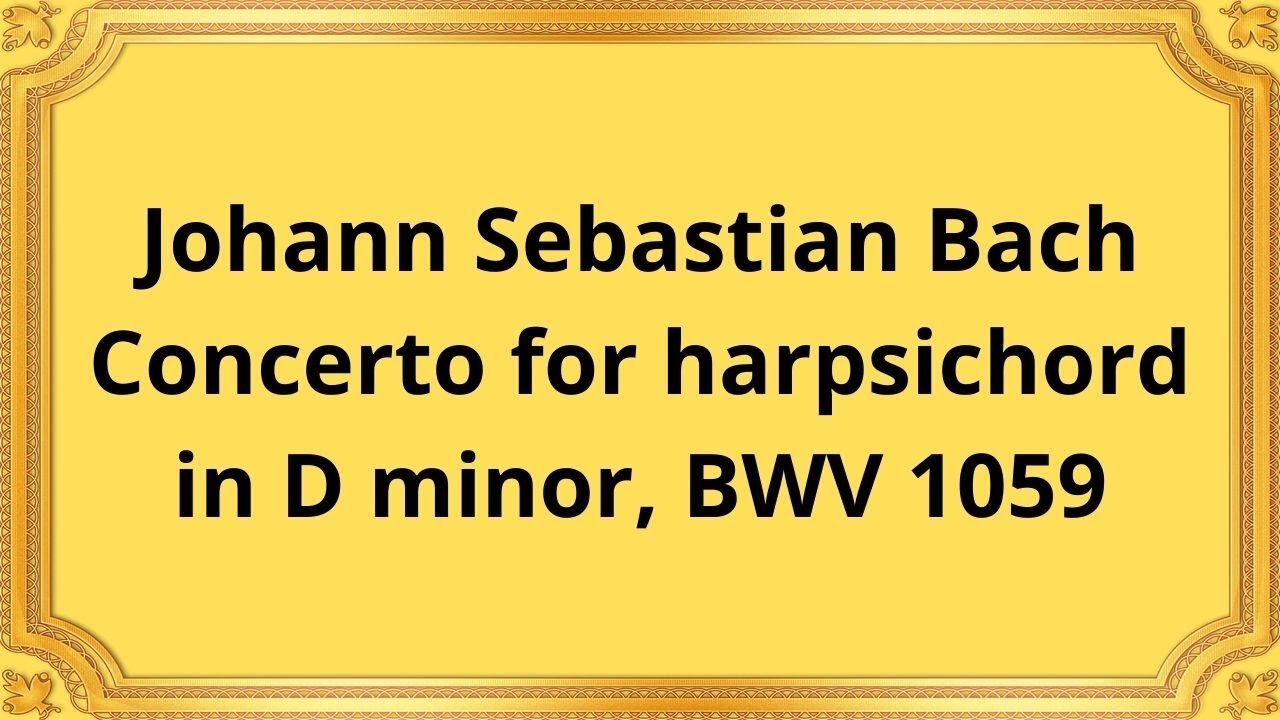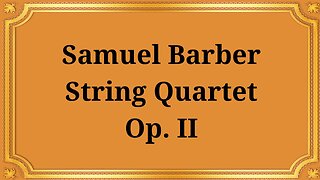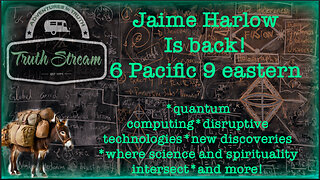Premium Only Content

Johann Sebastian Bach Concerto for harpsichord in D minor, BWV 1059
#JohannSebastianBach #HarpsichordConcerto #BWV1059 #ClassicalMusic #BaroqueMusic #Harpsichord #KeyboardMusic #BachsCompositions #BaroqueComposer #MusicalMasterpiece
Leonhardt-Consort
Gustav Leonhardt, harpsichord/director
The "Concerto for Harpsichord in D minor, BWV 1059" by Johann Sebastian Bach is a remarkable testament to the composer's ingenuity and mastery of the concerto form. Despite being a reconstruction based on surviving fragments of an earlier concerto, this work exemplifies Bach's unparalleled ability to create captivating and intricate musical compositions.
Composed during the Baroque period, the "Concerto for Harpsichord in D minor" is a shining example of Bach's keyboard concertos, a genre in which he excelled. The concerto consists of three movements: an opening movement marked as an allegro, a lyrical slow movement, and a lively final movement. Each movement showcases Bach's exceptional command of structure, melody, and contrapuntal writing.
The concerto's first movement, the allegro, introduces the listener to a captivating interplay between the solo harpsichord and the accompanying ensemble. Bach's meticulous attention to detail is evident in the intricate ornamentation and virtuosic passages, highlighting the harpsichord's capabilities as a solo instrument. The movement unfolds with rhythmic drive and melodic richness, drawing the listener into its dynamic and expressive world.
The second movement, marked adagio, contrasts the briskness of the first movement with a profound sense of lyricism and introspection. Bach's emotive use of harmonies and poignant melodic lines creates a compelling sense of depth and emotional resonance, allowing the harpsichord to shine in a more introspective light.
The concerto culminates in a vibrant and exuberant final movement, characterized by its spirited tempo and lively dance-like rhythms. The interaction between the soloist and the ensemble showcases Bach's ability to create engaging dialogues within the concerto format, demonstrating his mastery of interplay and musical conversation.
Despite the challenges inherent in reconstructing this concerto from surviving fragments, the resulting work stands as a testament to Bach's enduring legacy and his ability to captivate audiences with his inventive and masterful compositions.
In conclusion, the "Concerto for Harpsichord in D minor, BWV 1059" exemplifies Johann Sebastian Bach's prowess in crafting engaging, technically demanding, and emotionally resonant musical compositions. Its enduring appeal and significance within the repertoire of keyboard concertos solidify its place as a cherished gem of the Baroque era, showcasing Bach's unparalleled ability to weave intricate musical tapestries that continue to captivate audiences to this day.
You have the opportunity to support the channel:
https://destream.net/live/RadSiarAl/donate
https://www.buymeacoffee.com/6355radsiaral
-
 16:45
16:45
Classical music_Music Inspiration
9 days agoSamuel Barber String Quartet, Op. II
552 -
 1:23:30
1:23:30
TruthStream with Joe and Scott
2 days agoJaime Harlow is back! #483
22.1K21 -
 1:32
1:32
Gaming on Rumble
2 days agoWhat is the Rumble Creator Program?!?! | Lvl UP
69.9K4 -
 10:34:09
10:34:09
Rallied
17 hours ago $21.66 earnedSolo Challenges ALL DAY
270K9 -
 1:39:43
1:39:43
Brandon Gentile
2 days agoTOP Money Expert: Bitcoin Will Keep Setting All-Time Highs Beyond $10m
24.5K3 -
 2:02:28
2:02:28
Badlands Media
1 day agoDevolution Power Hour Ep. 385: Trump “Death” Hoax, Supreme Court Tariffs Fight, and Tech-Military Ops
80.5K42 -
 1:56:48
1:56:48
Tundra Tactical
11 hours ago $17.12 earnedFull Semi-Auto Comedy Hour
46.3K3 -
 1:55:52
1:55:52
BlackDiamondGunsandGear
1 day agoGlocks Want Gun Control? // Trump Tramples on your Rights? // After Hours Armory
36.9K6 -
 1:55:52
1:55:52
DLDAfterDark
15 hours ago $5.91 earnedDLD Live! Trump - Flag Burning - Glock & Gun Control - Martial Law Light?? - After Hours Armory
29.3K4 -
 13:46:18
13:46:18
GritsGG
22 hours agoRumble Customs! 3515 Ws! 🫡!
97.8K